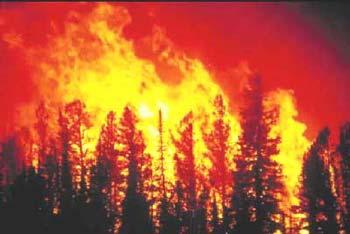Source: Xinhua
04-08-2009 21:47
Special Report: Tech MaxWASHINGTON, April 7 (Xinhua) -- Climate change will bring about major shifts in worldwide fire patterns, and those changes are coming fast, according to a first-of-its-kind analysis led by researchers at the University of California, Berkeley, in collaboration with scientists at the Texas Tech University.
 |
| Climate change will bring about major shifts in worldwide fire patterns, and those changes are coming fast.(File photo) |
The findings, published Wednesday in PLoS ONE, an open-access, peer-reviewed journal of the Public Library of Science, revealed that researchers used thermal-infrared sensor data obtained between 1996 and 2006 from European Space Agency satellites in their study of pyrogeography -- the distribution and behavior of wildfire -- on a global scale.
They not only got a global view of where wildfires occur, but determined the common environmental characteristics associated with the risk of those fires. They then incorporated those variables into projections for how future climate scenarios will impact wildfire occurrence worldwide.
The research was conducted with support from The Nature Conservancy, a conservation organization, as part of the organization's effort to integrate information about global fire regimes into planning for biodiversity conservation.
"This is the first attempt to quantitatively model why we see fire where we see it across the entire planet," said study author Max Moritz, assistant cooperative extension specialist in wild land fire at UC Berkeley's College of Natural Resources and co-director of the UC Center for Fire Research & Outreach.
"What is startling in these findings is the relatively rapid rate at which we're likely to see very broad-scale changes in fire activity for large parts of the planet."
